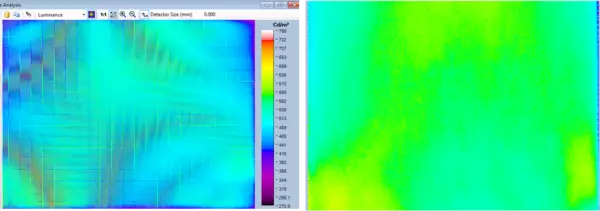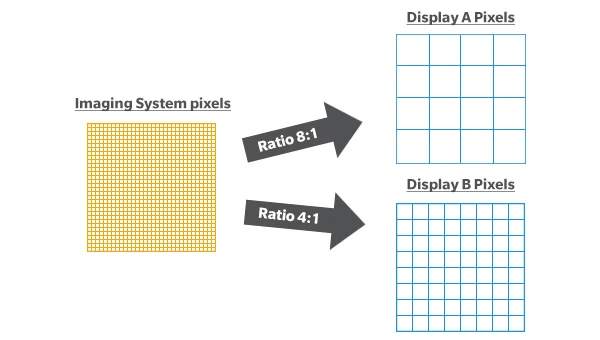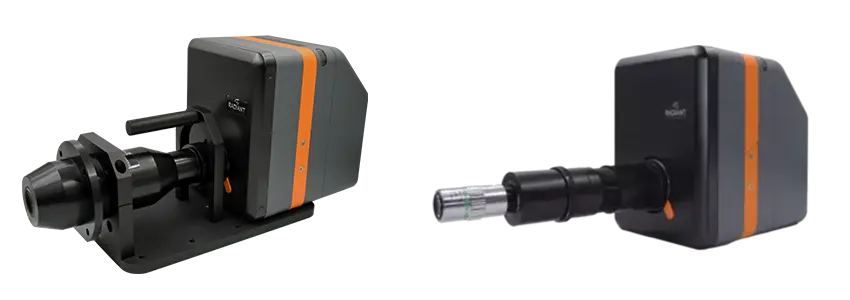Pillar-to-Pillar Display (P2P) Testing

The technological evolution in display panels has been rapid, with new advancements transforming how we interact with screens in almost every sector—from consumer electronics to automotive. One of the most innovative developments in recent years, especially in the automotive industry, has been the rise of Pillar-to-Pillar (P2P) displays. Made up of multiple display panels that span the entire width of a vehicle’s dashboard, stretching from one A-pillar to the other, they integrate essential information such as navigation, entertainment systems, and even augmented reality (AR) elements into a seamless interface. As more automakers opt for these unified, widescreen displays that deliver a sleek, modern look and improved functionality, the demand for precise visual inspection methods has never been greater.
Pillar-to-Pillar (P2P) Display Inspection Challenges
Standard parameters like luminance, chromaticity, uniformity, and pixel defects are crucial for ensuring the optimal performance of Pillar-to-Pillar (P2P) displays. However, their unique configurations and larger sizes pose testing challenges beyond typical flat-panel or standard-size automotive displays.
Many Pillar-to-Pillar (P2P) displays feature curved designs, adding complexity to display testing, particularly moiré removal. Moiré is an undesirable visual artifact, or a form of aliasing, often seen when capturing images of display screens. If left unaddressed, it can obscure pixel defect detection. While most display testing software includes moiré removal algorithms effective on flat surfaces, the curvature of Pillar-to-Pillar (P2P) displays can cause focus variations. This reduces the effectiveness of the algorithms in detecting pixel defects accurately. Addressing these challenges requires a high-resolution imaging system with a calibrated aperture of f/8 or higher. This setup provides a greater depth of field, ensuring a more consistent focus across the curved display.

Example of before (left) and after (right) the removing moiré.
Image courtesy of Radiant Vision Systems, LLC.
In addition to curvature challenges, the wide format of Pillar-to-Pillar (P2P) displays presents difficulties in pixel-level measurement. Maintaining an appropriate pixel oversampling ratio between the imaging system’s sensor pixels and the display’s pixels is critical for accurately capturing pixel data and detecting pixel defects. One method is to capture multiple display sections and then stitch the images together. However, it is often too slow to meet the high-volume manufacturing takt time requirements. A more efficient solution involves using a high-resolution imaging system, preferably 45 megapixels or higher. It can capture the entire display in a single image while maintaining the necessary oversampling ratio, ensuring speed and accuracy in the measurement process.

Illustrative example of imaging system sensor pixels vs. display pixels.
Additionally, many Pillar-to-Pillar (P2P) displays are now adopting emissive display technologies like OLED, microLED, and miniLED for their superior visual quality and flexibility. These emissive displays require careful testing to ensure uniformity across the surface. High-resolution imaging systems, such as those with 61 megapixels or higher, paired with turnkey software, are recommended for accurate pixels and subpixels measurement. Adjustment factors can then be calculated and applied to correct (demura) the display, ensuring consistent performance across the entire surface.
Measurement Solutions for Pillar-to-Pillar (P2P) Display
Radiant Vision Systems, a member of the Konica Minolta Group, offers comprehensive display testing solutions designed for high-speed production inspections. For Pillar-to-Pillar (P2P) display testing, they provide an advanced imaging colorimetry-based system that includes the ProMetric® I series Imaging Colorimeter and TrueTest™ Software.
The ProMetric® I series Imaging Colorimeter has high-resolution options of up to 61 megapixels and comes with factory-calibrated electronically controlled lenses that offer flexibility for different working distances and aperture settings (e.g., f/3.3, f/8). Additionally, it is supported by accessories like the conoscope lens for viewing angle performance and the microscope lenses for pixel structure evaluation. Paired with the turnkey TrueTest™ Software, which includes optional modules, the imaging colorimeter can measure a wide range of parameters in Pillar-to-Pillar (P2P) displays. These parameters include luminance, chromaticity, contrast, viewing angle, sparkle, uniformity calibration (demura), subpixel-level measurement, and line and pixel defects.

ProMetric® I series Imaging Colorimeter with conoscope lens (left) and microscope lens (right).
Image courtesy of Radiant Vision Systems, LLC.
Interested in learning more about the Radiant Vision Systems imaging system for Pillar-to-Pillar (P2P) display? Or perhaps require assistance in finding suitable measurement solutions for testing your display? Reach out to our team of experts for a complimentary consultation.
